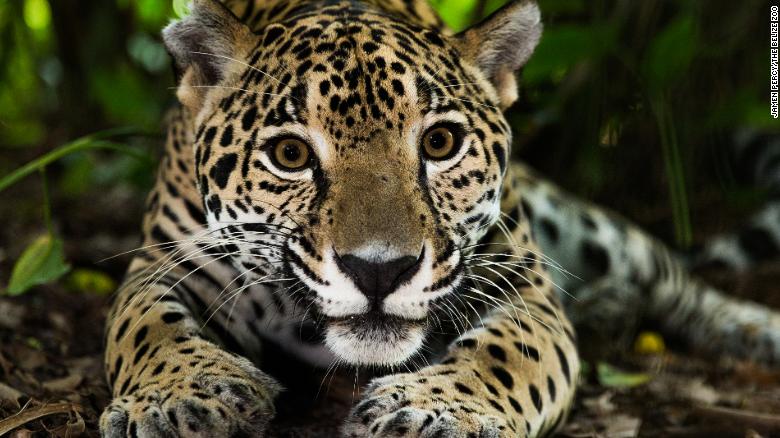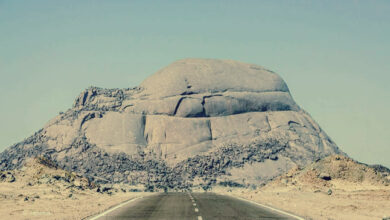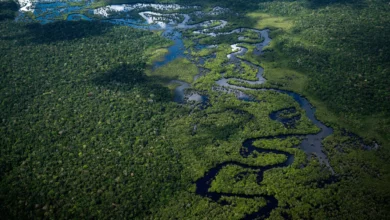
(CNN) – Jaguar spots are etched in black ink on Reynold Cal’s lower arms. Tattooed on the left is the rose-shaped pattern found on Romeo, and on the right is that of Superman, names Cal gave to two of the big cats after watching them over the years on camera trap footage.
“Every jaguar has spots, but the spots are very unique to that individual,” he says. “You can identify a jaguar just by looking at its pattern.”
As a member of the Kekchi Maya, one of three Maya groups in Belize, in Central America, Cal grew up surrounded by forests, enchanted by tales of the sacred big cat that prowled within them. Today, his job is to track and protect jaguars and other species in Runaway Creek Nature Reserve, a protected area of rainforest that is part of a key wildlife corridor in central Belize.
“The Mayas had a high reverence for the jaguar — it is a sign of royalty, of power, of strength,” he says. He recalls his grandfather telling him to respect the majestic mammal and never hunt it, and he remembers the fear he felt as a child when he saw jaguar tracks on the forest floor. “The reason I put these patterns (on my arms) is because I feel a connection to the ancient past,” he adds.
But despite the rich history, the future of the jaguar is uncertain. Numbers are decreasing, according to the IUCN, which lists the species as near-threatened, and destruction of key habitat is causing populations to fragment, which could lead to extinction across the region.
Critical bottleneck
In an attempt to avert this catastrophe, a number of conservation organizations — including Runaway Creek Nature Reserve, Panthera, Monkey Bay Wildlife Sanctuary, Belize Zoo, the Wildlife Conservation Society and re:wild — joined forces to protect one essential slice of land within the jaguar’s geographic range: the Maya Forest Corridor. The relatively small area — less than six miles wide and covering 90,000 acres — has outsized consequences for South America’s biggest cat.
“It is literally the connecting thread between Belize’s two largest forest blocks,” says Elma Kay, biologist and managing director of the Belize Maya Forest Trust. Jaguars, unable to cross between southern Belize and Guatemala due to deforestation and urban development, use the corridor when heading north to Mexico or south towards the rest of Central or South America, she explains. It is fast becoming a crucial link in the entire jaguar range, which spans millions of square miles, with breeding populations found from Mexico to Argentina.
But the “tiny sliver of land” is in danger of shrinking even further, Kay warns. In the past 10 years, deforestation to make way for large-scale agriculture, such as sugarcane and cattle ranching, has reduced the size of the Maya Forest Corridor by more than 65%, according to the Wildlife Conservation Society.
This creates a barrier for the big cats, which need large tracts of land to survive, explains Emma Sanchez, coordinator for Panthera’s Belize Jaguar Program. “If an area is deforested, jaguars won’t cross it, because … they can get killed, there probably won’t be any prey for them, or they might have limited water,” she says.
Cutting off the jaguar’s range has enormous consequences, she adds, because all populations are connected through migration and breeding. If a small population becomes isolated, it lacks genetic diversity and eventually dies off. “There’s a lot of cases of the species going locally extinct in different areas,” she says.
And losing the jaguar would have a knock-on effect on the surrounding environment. As an apex predator, they create a balance in the ecosystem, limiting the numbers of species below them in the food chain. “The protection and conservation of jaguars also protects a larger landscape where we have different habitats and many other species,” says Sanchez.
Protecting jaguar habitat
With the clock ticking as deforestation rates rise, conservation groups decided the quickest and most effective way to protect the Maya Forest Corridor was to buy the land within it.
At the end of last year, they secured 30,000 acres for protection, using funds raised by several global nature organizations. Together with nearby nature reserves such as Runaway Creek, Monkey Bay and the land managed by Belize Zoo, this brings the total area protected to 42,000 acres, about the size of Washington DC.
The Maya Forest Corridor lies between two of Central America’s largest wilderness areas. In recent years, humans have developed the area, building highways across it.
“We need to purchase another 50,000 acres to complete the corridor connection,” says Kay, “and the reality is there isn’t that much more available to purchase in the area.”
Some land is privately owned, and rapid urban and agricultural expansion in the area means it is expensive, she explains. But there is hope. The government endorsed the project in 2019, and local communities recognize the benefit of protecting nature, says Kay, as it will help to provide sustainable livelihoods, water security and healthy soil.
While the Maya Forest Corridor initiative has taken an international effort, Kay says that conservation on the ground has been led by a grassroots Belizean movement. As a Belizean herself, “that makes me extremely proud,” she adds.
Respect for jaguars lives on among local communities, agrees Cal. He just hopes that the jaguars will survive so that younger generations can appreciate them.
“They are magnificent animals,” he says. “They’re very shy, it’s hard to see them. But when you see tracks, at least you know that a jaguar is close by.”




